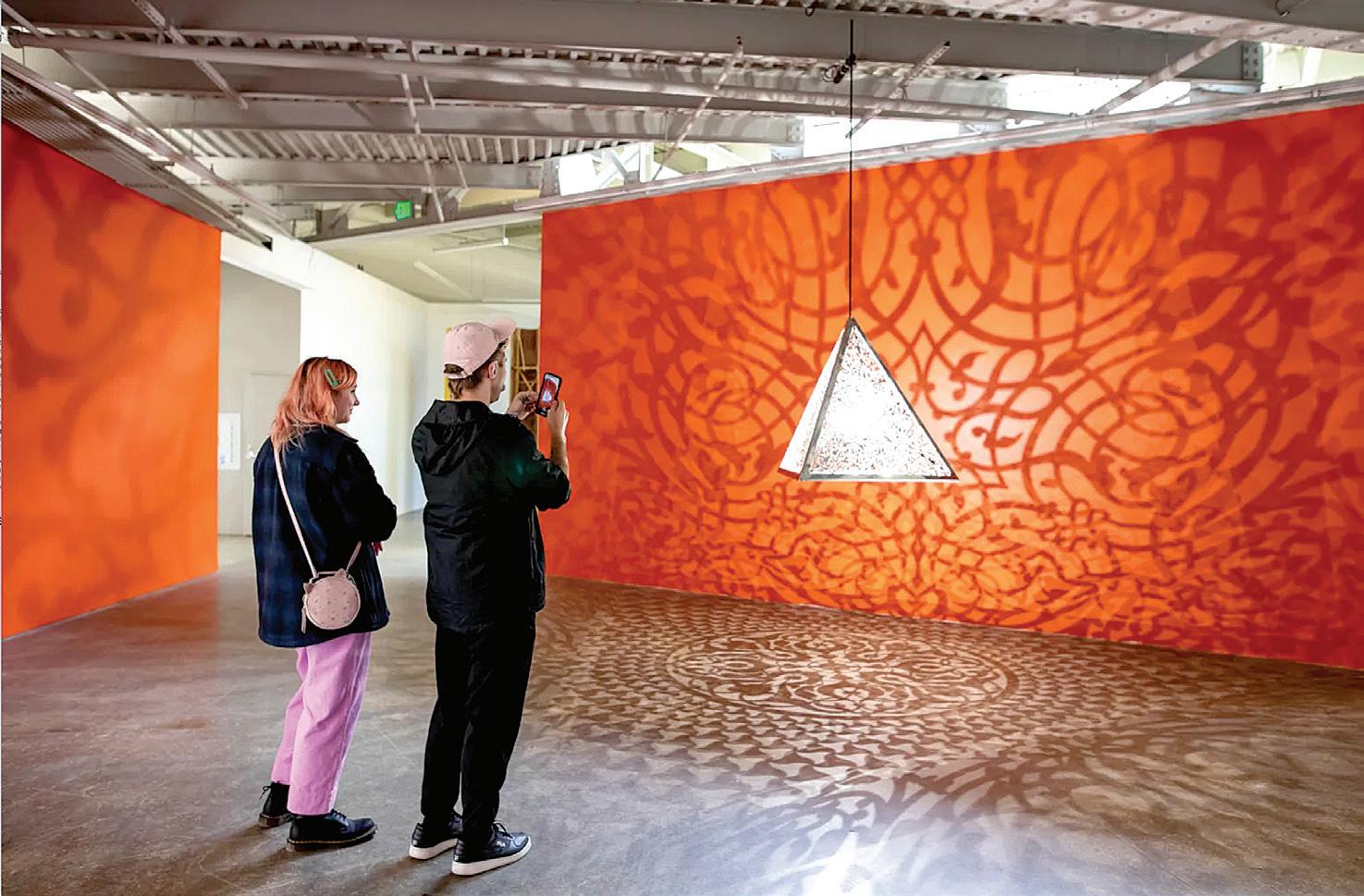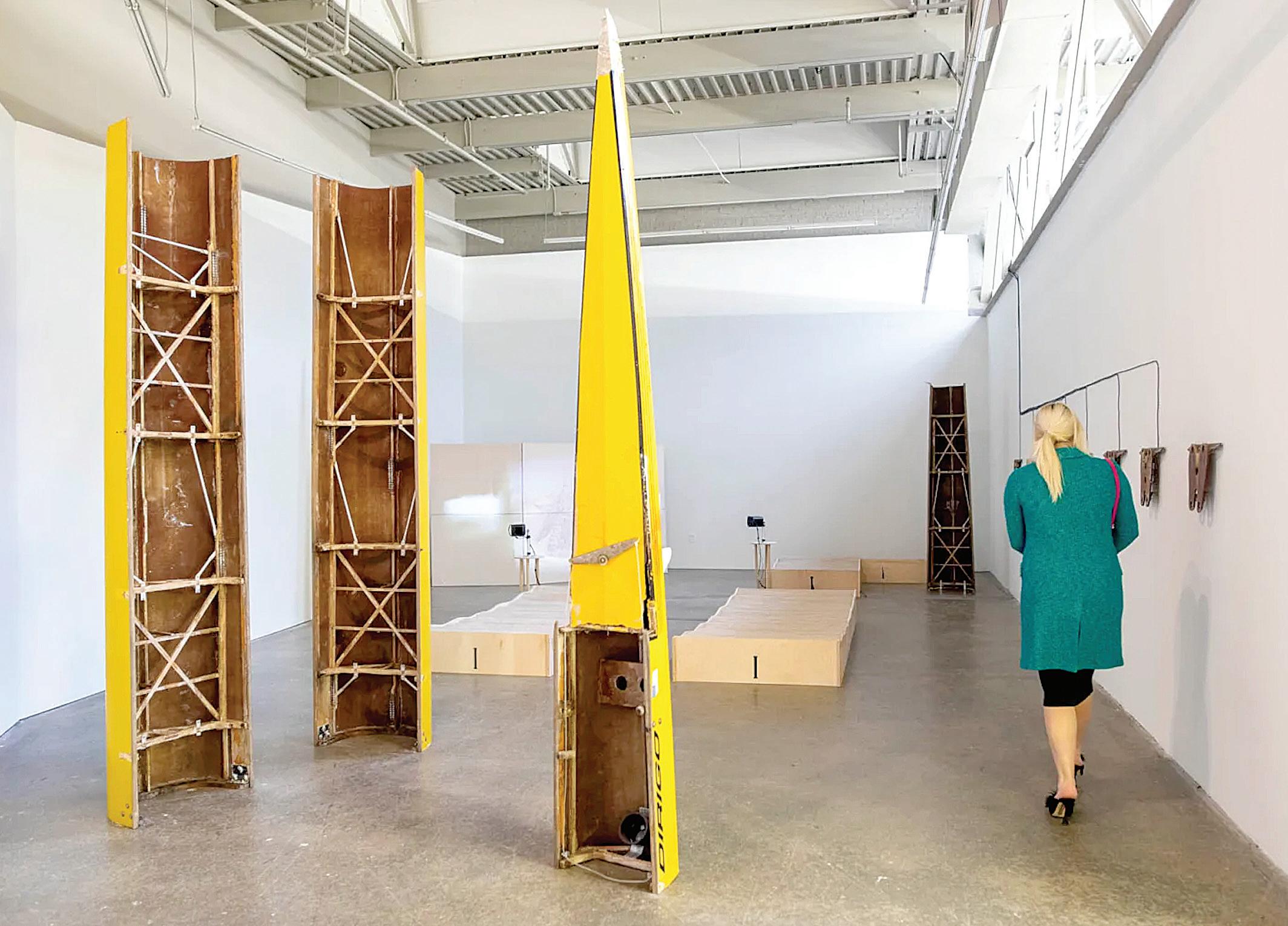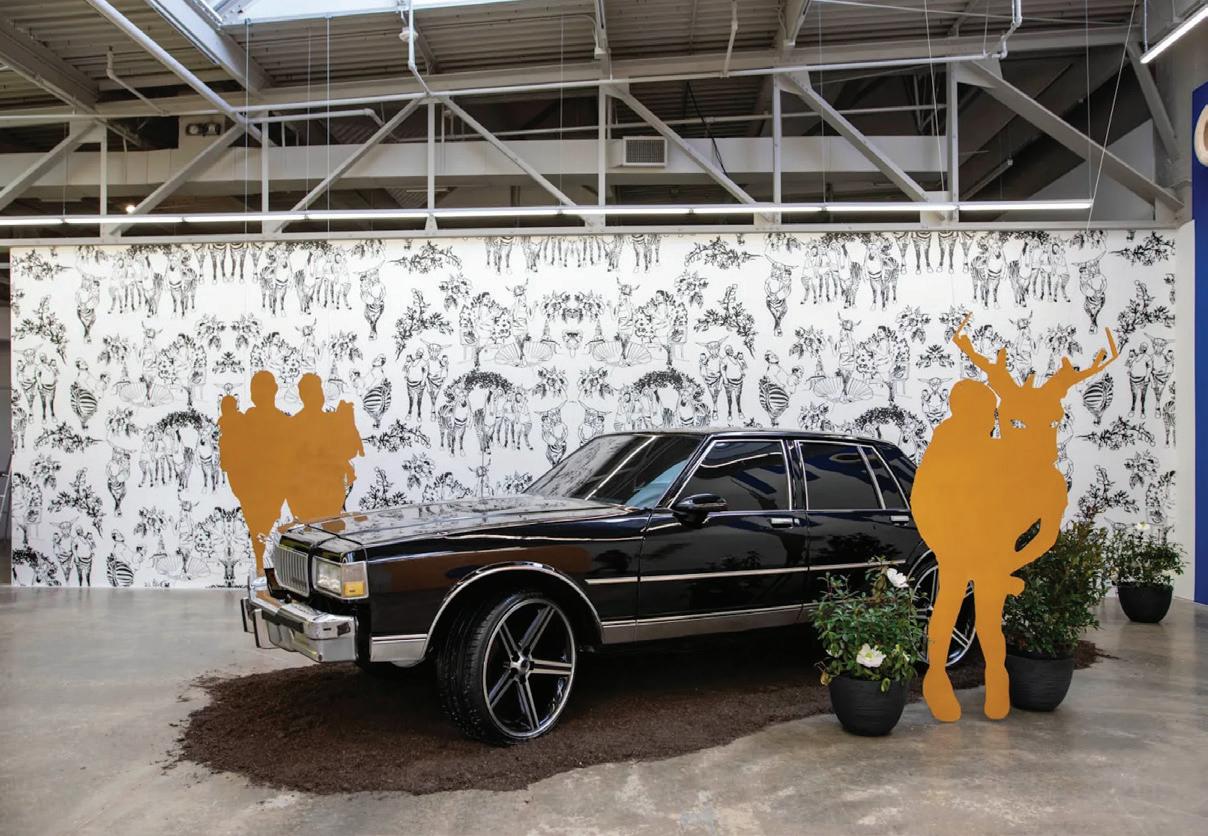
4 minute read
New Worlds: Georgia ‘Women to Watch’ at Atlanta Contemporary
By Isadora Pennington
The Atlanta Contemporary has unveiled a moving and thought-provoking exhibition featuring the works of five emerging Georgia women artists.
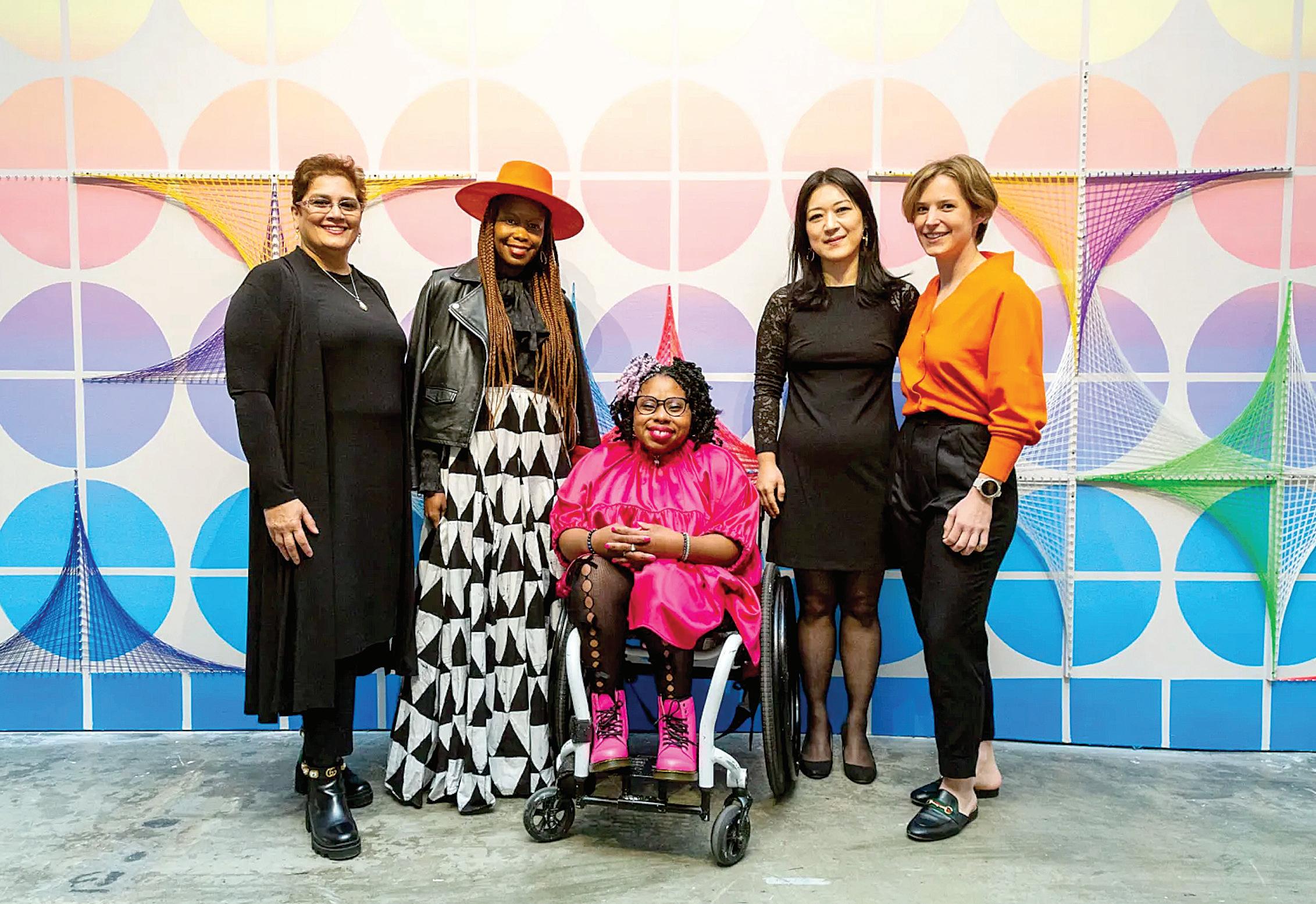
New Worlds: Georgia Women to Watch was organized by the Georgia Committee of the National Museum of Women in the Arts and guest curated by Melissa Messina and Sierra King.
This exhibition examines how artists have been influenced by current events and societal notions in the modern age, pondering the question of what a reimagined future might look like. Women to Watch is a recurring highly competitive exhibition that is held roughly every three years, and one of the five artists in New Worlds will be chosen to exhibit their work in the National Museum of Women in the Arts (NMWA) in Washington, D.C. come Spring 2024.
The longstanding tradition of uplifting and highlighting women artists at Atlanta Contemporary – where 76% of exhibiting artists are women – provided the perfect setting for this all-women exhibition. This statistic is particularly compelling when considering that most major art museums across the country are still dominated by male artists.
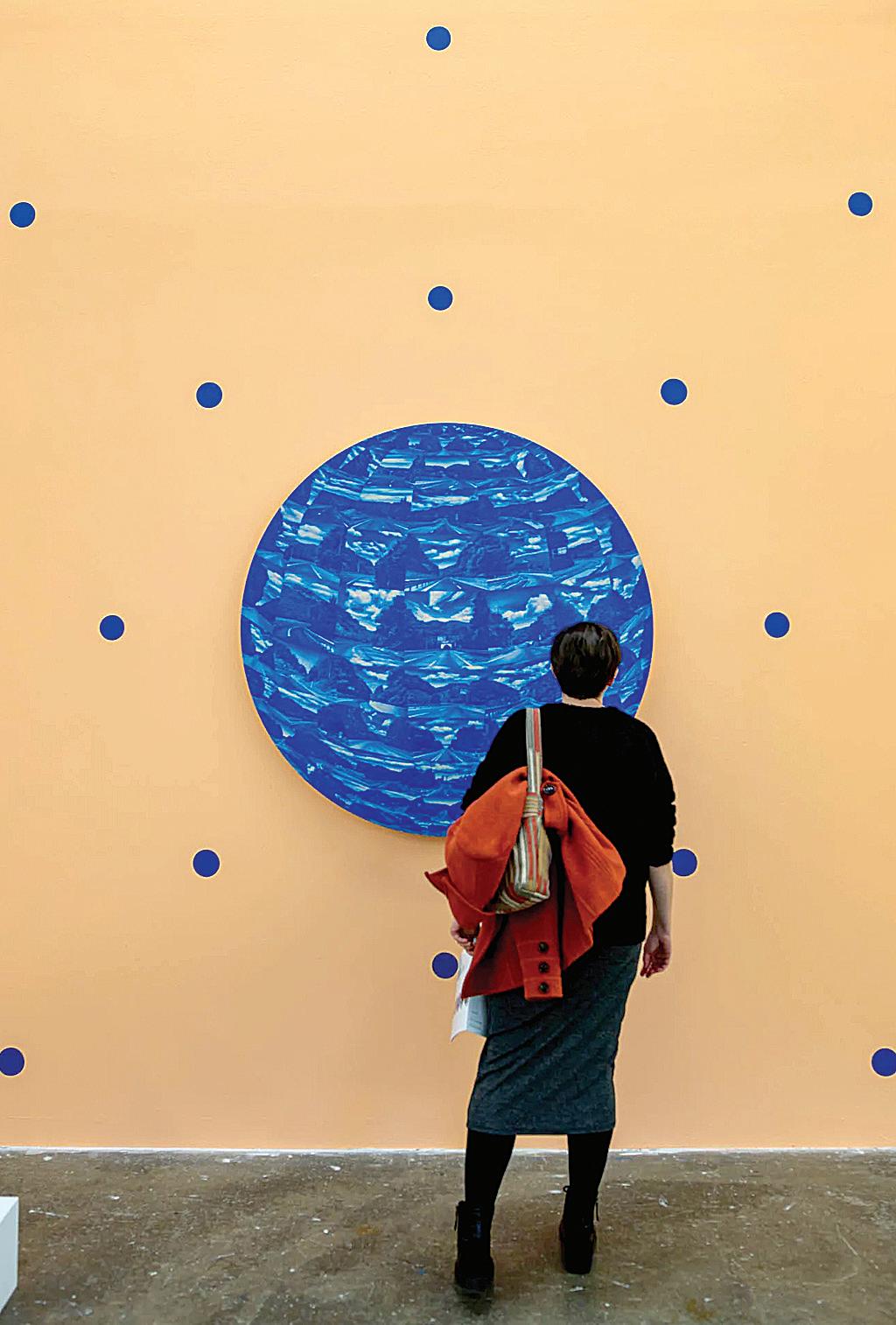
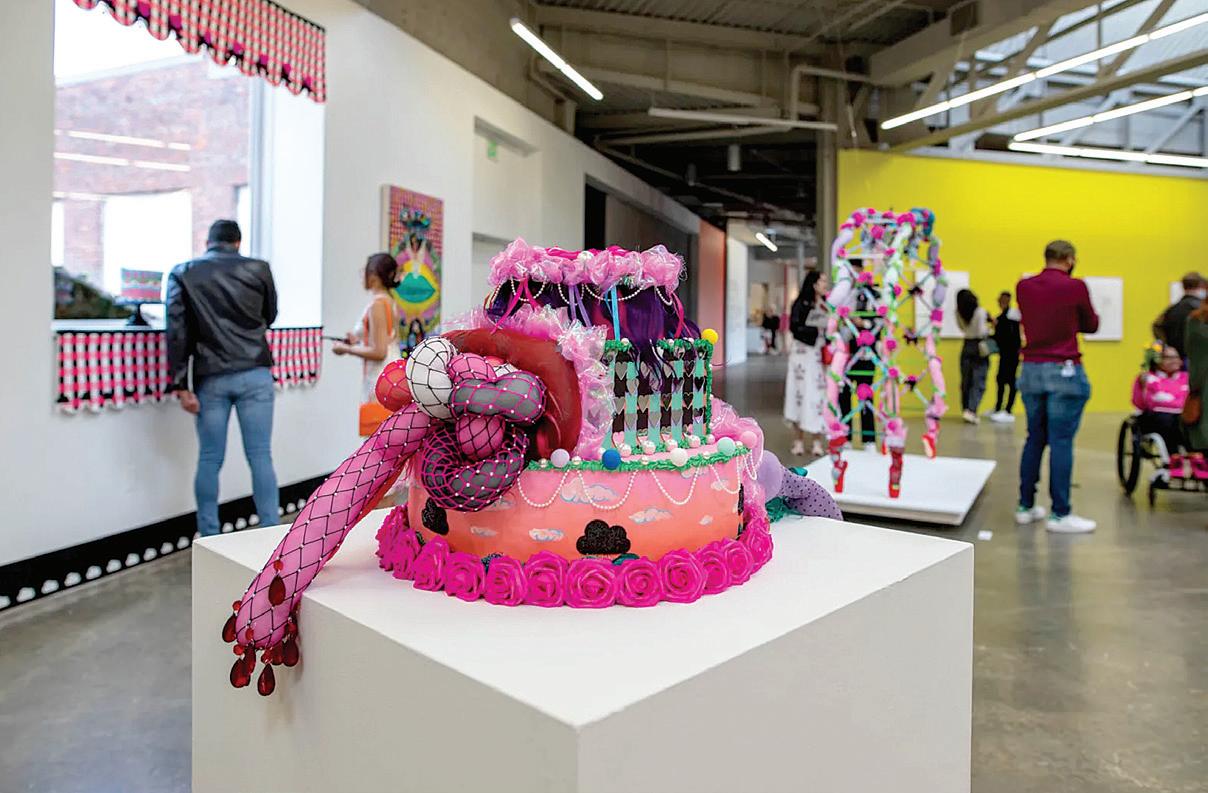
The planning for New Worlds commenced right around the time of the first shutdowns due to the COVID-19 pandemic. What followed was unprecedented calls for social reform and racial justice, political division, and public outcry against prejudice.
NMWA Women to Watch Senior Curator Virginia Treanor and Associate Curator Orin
Zahra found themselves wondering how women artists across Georgia were using art to respond to this critical time in world history.
Upon entering the Atlanta Contemporary gallery space, Anila Quayyum Agha’s My Secret Garden hangs suspended from the ceiling in front of a bright red wall. A light shines out from within the laser-cut stainless steel piece projecting a mesmerizing sea of patterns and imagery outward into the space. Agha, who lives in Augusta, has been influenced by her experiences with Islam, Christianity, Pakistan, and America. Her works evoke a dichotomy of alienation and transience that is familiar to the migrant experience.
“Within my artpractice, exploring the perceived cultural/social polarities such as the masculine-feminine, public-private, definiteamorphous, and religioussecular permits me to delve into controversial topics that reflect upon topical themes of racial and cultural identity, global politics, environmental concerns, mass media and social/gender roles,” said Agha.
The multimedia work of Marianna Dixon Williams, also from Augusta, offers an almost scientific approach to questions of transformation both within ourselves and the environment that surrounds us. This collection of works was started in 2013 in the Arctic Circle as Williams set out to “simulate, emulate, or measure the world digitally” with the use of devices and microcontrollers that they built by hand. “In this space we can begin to consider how we see the natural world and the ability of this world to be simulated, emulated, and measured directly.”
The sculptural landscape that Williams has constructed offers sound and visual representations of both ocean and desert, prompting the viewer to consider how memory and wandering might aid in a reconciliation between our environment and our uncertain future.
In the larger gallery space, the mostly monochromatic works of Namwon Choi invite the viewer to draw close. Minutely painted landscapes are framed by blocks of bright color or laid atop one another in geometric assembly. Choi, who lives in Savannah, is heavily influenced by her experience living and creating artwork as a Korean immigrant. “I perceive myself as being in a constant state of perpetual motion,” said Choi. She uses highways as a conduit to express the experience of migrancy while touching upon her
Continued on page 16 simultaneous feelings of affiliation and alienation.

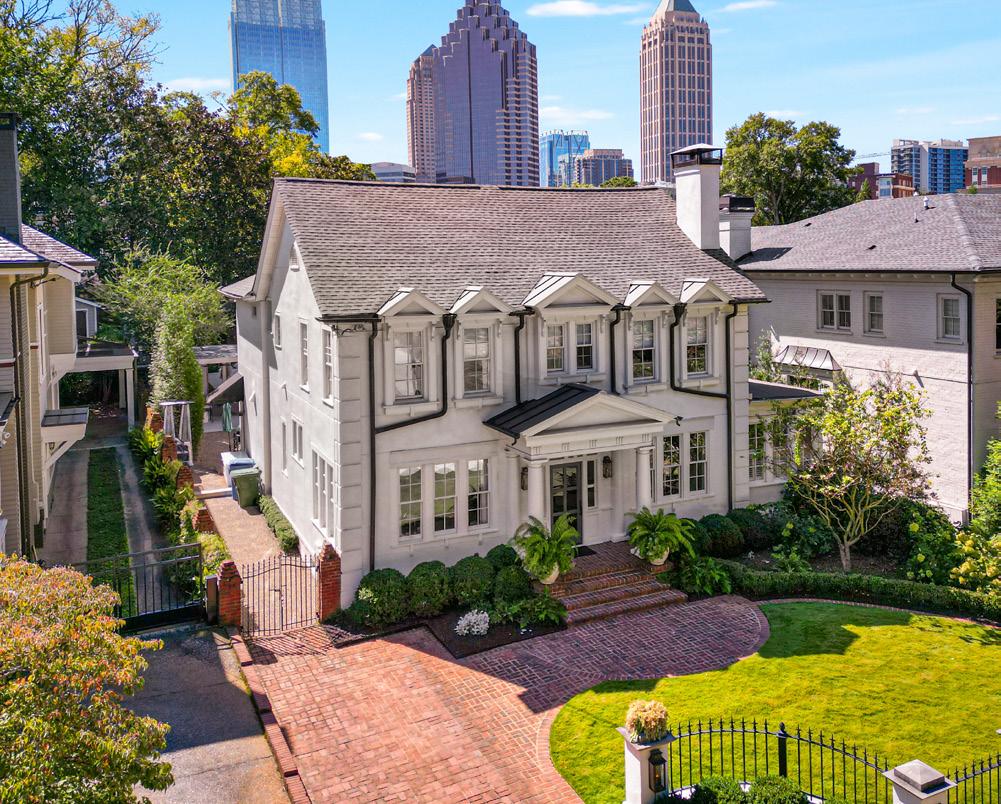
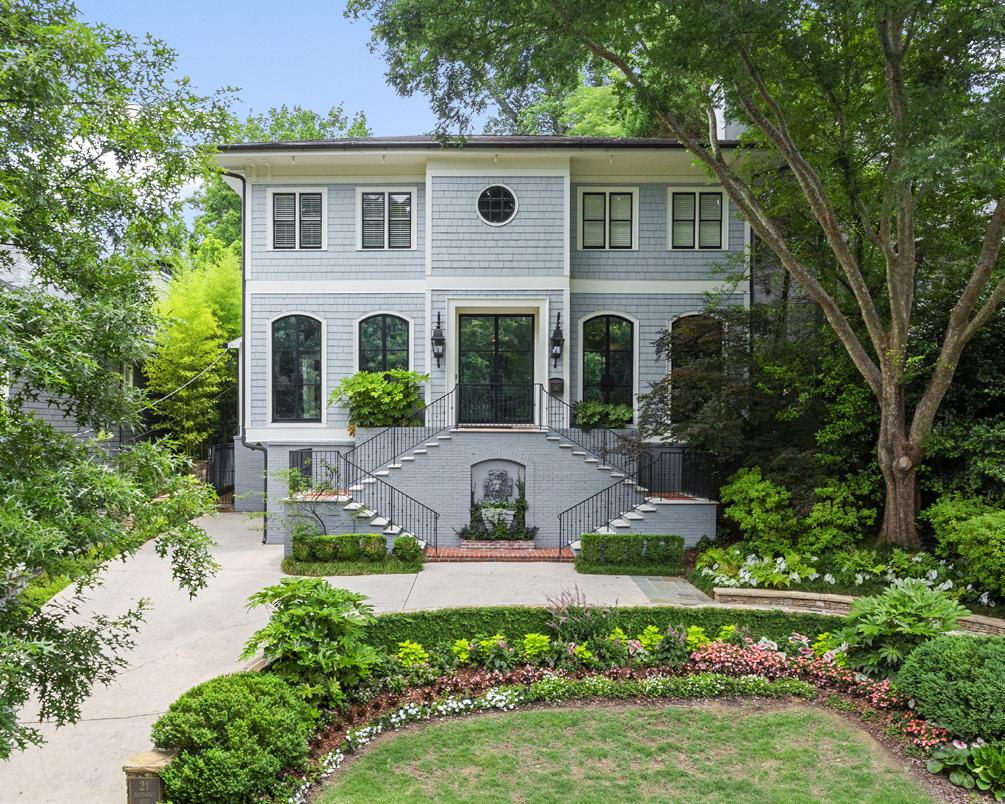







Choi’s incredibly detailed works are composed of gouache on panels, and she uses traditional Korean painting to add cultural and historical context to otherwise familiar and forgettable landscapes. The paintings and their monochromatic fragments interact to create a dialogue about the in-betweenness of both place and identity.
Meanwhile, Victoria Duggar’s joyful sculptural figures and embellished canvases function as “empathetic portals” in which viewers can explore themes of unbridled and unapologetic femininity and desire. As a disabled Black woman artist, Duggar hopes her works will “humanize me not because of my appearance, but despite it.” Art history references, patterns, and a palpable sense of humor infuse her works with a rich layering of meaning and importance.
“My anthropomorphic figures are another way for me to visualize my own body, blackness, femininity, and fragility,” explained Duggar. Evocative of the atrophy that often accompanies disability, Duggar’s figures are rendered with a light-heartedness that defies pity and instead embraces a sense of ambivalence.
You can’t miss the works by Atlanta’s own Shanequa Gay. Sculptural forms and reimagined toile patterns surround The Southern Chariot, a vintage box-shaped vehicle set atop a mound of earth. Central to all of Gay’s work is an exploration of Blackness and magical thinking that is presented as a contrast to mainstream perceptions of Southern Black women.
“Rarely, if ever, are Southern AfricanAscendant Womyn and girls the protagonists or the center of mainstream storylines. There is something wonderful and affirming about visual depictions of your own reality and seeing people who look like you in the mainstream,” said Gay. In her works Black women and girls are elevated to shrines, their expressions and poses resolute and the opportunity for magical thinking is “unbridled.” The contemporary take on a toile pattern spread across the wall portrays Black girlhood as the Birth of Venus, the Primavera, and the Virgin Mary with a composition that offers the familiarity of toile while departing from its traditional depictions of European mythology and countryside vignettes.
The Atlanta Contemporary will host New Worlds: Georgia Women to Watch 2023 through June 4. For more information, visit atlantacontemporary.org.
